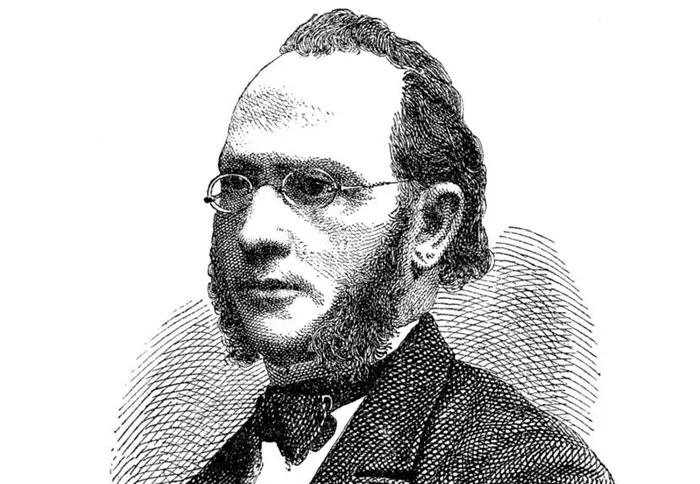The 19th century was a defining era for German poetry, marked by the emergence of Romanticism, Realism, and the early stirrings of Modernism. During this period, numerous poets explored themes of nature, nationalism, spirituality, and human emotion, shaping the literary culture of Germany. Among these poets was Georg Christian Dieffenbach, a lesser-known yet significant figure in 19th-century German poetry. Dieffenbach’s work reflects the spirit of his time, blending Romantic ideals with a deeply personal lyrical style. This article explores his life, works, and contributions, while also comparing him with other poets of his era.
The Life and Background of Georg Christian Dieffenbach
Georg Christian Dieffenbach was born in the early 19th century in Germany. His upbringing and education shaped his literary aspirations, as he was influenced by the intellectual movements of his time. Like many poets of the period, Dieffenbach’s works were deeply connected to German cultural traditions, as well as to the natural and philosophical themes that defined 19th-century German poetry.
Although his works were not as widely recognized as those of Goethe or Heine, Dieffenbach carved out a space for himself within the literary world through his evocative use of language and introspective themes. His poetry often contained reflections on nature, spirituality, and the human condition, aligning him with the ideals of German Romanticism while also incorporating elements of Realism.
The Themes and Style of Dieffenbach’s Poetry
Dieffenbach’s poetry is characterized by its lyrical beauty, emotional depth, and philosophical undertones. Like many 19th-century German poets, he was deeply influenced by Romanticism. His work often portrayed nature as a source of inspiration and solace, similar to the poetry of Novalis and Joseph von Eichendorff. He also explored themes of love, faith, and existential contemplation, making his poetry resonate with readers seeking both aesthetic pleasure and intellectual engagement.
One of the defining aspects of Dieffenbach’s poetry is his use of simple yet powerful imagery. Unlike the grandiose style of some of his contemporaries, Dieffenbach employed a more restrained and intimate approach to poetic expression. This allowed his work to maintain a sense of sincerity and accessibility while still engaging with the larger philosophical questions that dominated 19th-century German poetry.
Dieffenbach and His Contemporaries
To fully appreciate Dieffenbach’s place in German poetry, it is useful to compare his work with that of other poets from the same period. The 19th century saw the rise of some of Germany’s most renowned poets, including Johann Wolfgang von Goethe, Heinrich Heine, Eduard Mörike, and Annette von Droste-Hülshoff.
1. Dieffenbach and Goethe: Johann Wolfgang von Goethe, although primarily associated with the late 18th century, remained an influential figure in 19th-century German poetry. His work in Romanticism, particularly in “Faust” and “West-östlicher Divan,” set a high standard for poetic excellence. While Goethe’s poetry was often grand and philosophical, Dieffenbach’s approach was more intimate and introspective. Unlike Goethe’s expansive narratives and philosophical dialogues, Dieffenbach focused more on the immediate emotional experience of the individual.
2. Dieffenbach and Heine: Heinrich Heine is often regarded as one of the most innovative poets of 19th-century German poetry. Heine’s biting satire and political commentary set him apart from many of his contemporaries. While Dieffenbach shared Heine’s lyrical tendencies, he did not engage in the same level of political discourse. Instead, his poetry remained more personal and meditative, concerned with themes of nature and spirituality rather than social critique.
3. Dieffenbach and Mörike: Eduard Mörike, like Dieffenbach, focused on nature and the inner life of the individual. Mörike’s poetry, however, had a musical quality that reflected his deep interest in folk traditions. Dieffenbach’s work, in contrast, was more restrained and philosophical, often reflecting a deep personal introspection rather than the folk-inspired lyricism found in Mörike’s verses.
4. Dieffenbach and Droste-Hülshoff: Annette von Droste-Hülshoff is celebrated for her evocative descriptions of nature and her psychological depth. Like Dieffenbach, she explored themes of faith and existential uncertainty. However, Droste-Hülshoff’s poetry often carried a darker tone, whereas Dieffenbach’s work tended to maintain a more contemplative and hopeful perspective.
The Legacy of Georg Christian Dieffenbach
Despite not achieving the same level of fame as some of his contemporaries, Dieffenbach’s contributions to 19th-century German poetry should not be overlooked. His ability to blend Romantic lyricism with philosophical depth made his work an important part of the literary landscape of the time. He exemplifies the quieter, more introspective side of German poetry, offering a contrast to the grand narratives and political statements that defined the era.
Dieffenbach’s legacy lies in his poetic ability to capture the personal and emotional essence of the human experience. His influence can be seen in later poets who sought to balance Romantic ideals with a more personal and reflective approach to poetry. In this sense, he remains a significant, if somewhat underappreciated, figure in German literary history.
Conclusion
Georg Christian Dieffenbach represents an important facet of 19th-century German poetry. His work, though not as widely recognized as that of Goethe or Heine, contributes to the rich diversity of German literary expression during this period. Through his focus on nature, introspection, and lyrical beauty, Dieffenbach exemplifies the Romantic spirit while also engaging with the philosophical inquiries that defined the age. His poetry serves as a testament to the enduring power of personal and emotional expression in the broader context of German poetry. By examining his life and work, we gain a deeper understanding of the nuances of 19th-century German literature and the many voices that shaped its development.

